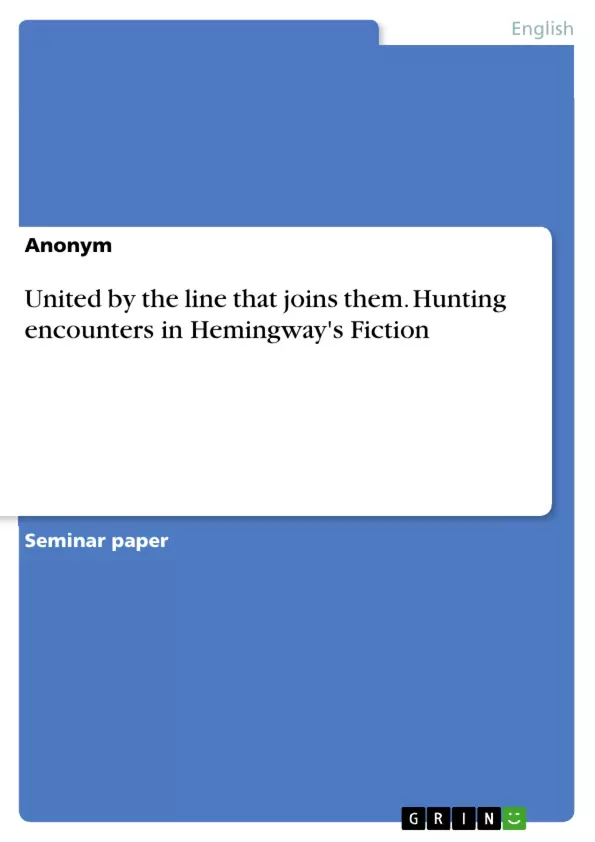The main task of the following essay is a comparison between two relationships towards animals in Hemingway's Hunting Stories: "The old man and the sea" and "The short happy life of Francis Macomber."
Santiago finds a huge marlin on a fishing trip that brings him to his limits while Francis Macomber goes on a trophy hunt to slay a lion. As different as Hemingway’s protagonists in “The Old Man and the Sea” and “The Short Happy Life of Francis Macomber” are, as different are their relationships with the hunted animals and their motivations.
In his short story Hemingway goes as far as providing a description directly from the lion’s perspective. Both hunters see their lives not only impacted permanently but their struggles can be interpreted as a symbol for something far greater.
Inhaltsverzeichnis (Table of Contents)
- Introduction
- Description of the Animals
- Encounters
- Relationship with the Animals
- Impact
- Symbolical Value
- Conclusion
- Bibliography
Zielsetzung und Themenschwerpunkte (Objectives and Key Themes)
This paper explores the life-changing encounters between human characters and animals in Hemingway's fiction, focusing on the distinct perspectives and motivations of both hunter and hunted. By examining the dynamics of these relationships, the paper aims to shed light on how encounters with animals shape human experiences and self-discovery. It explores the themes of respect, fear, power, and symbolism, and examines the impact of these encounters on both the hunter and the hunted.
- The impact of encounters with animals on human characters in Hemingway's fiction.
- The differing motivations and perspectives of hunters and hunted animals.
- The role of power dynamics and equipment in shaping the nature of these encounters.
- The symbolic value of animals in Hemingway's narratives.
- The application of Cultural Animal Studies to understand the complex relationship between humans and animals in literature.
Zusammenfassung der Kapitel (Chapter Summaries)
The introduction establishes the context for the study, contrasting the motivations and experiences of Santiago in "The Old Man and the Sea" and Francis Macomber in "The Short Happy Life of Francis Macomber." It highlights the transformative nature of these encounters and introduces the framework of Cultural Animal Studies. The "Description of the Animals" chapter delves into the detailed portrayals of the marlin and the lion, focusing on how Hemingway uses descriptions to shape the reader's understanding of their physical presence and emotional states. The "Encounters" section analyzes the specific circumstances and contexts of the hunting events, emphasizing the uneven power dynamics and the disparity in equipment between the hunters and their prey.
Schlüsselwörter (Keywords)
The primary focus of this paper centers around the themes of hunting, human-animal interactions, power dynamics, symbolism, and Cultural Animal Studies. Key concepts explored include Hemingway's depiction of animals as actors, the transformation of human characters through encounters with animals, and the ethical implications of hunting practices in the context of uneven power relations. These themes are further explored through analyses of specific texts, including "The Old Man and the Sea" and "The Short Happy Life of Francis Macomber."
- Arbeit zitieren
- Anonym (Autor:in), 2018, United by the line that joins them. Hunting encounters in Hemingway's Fiction, München, GRIN Verlag, https://www.grin.com/document/973888



